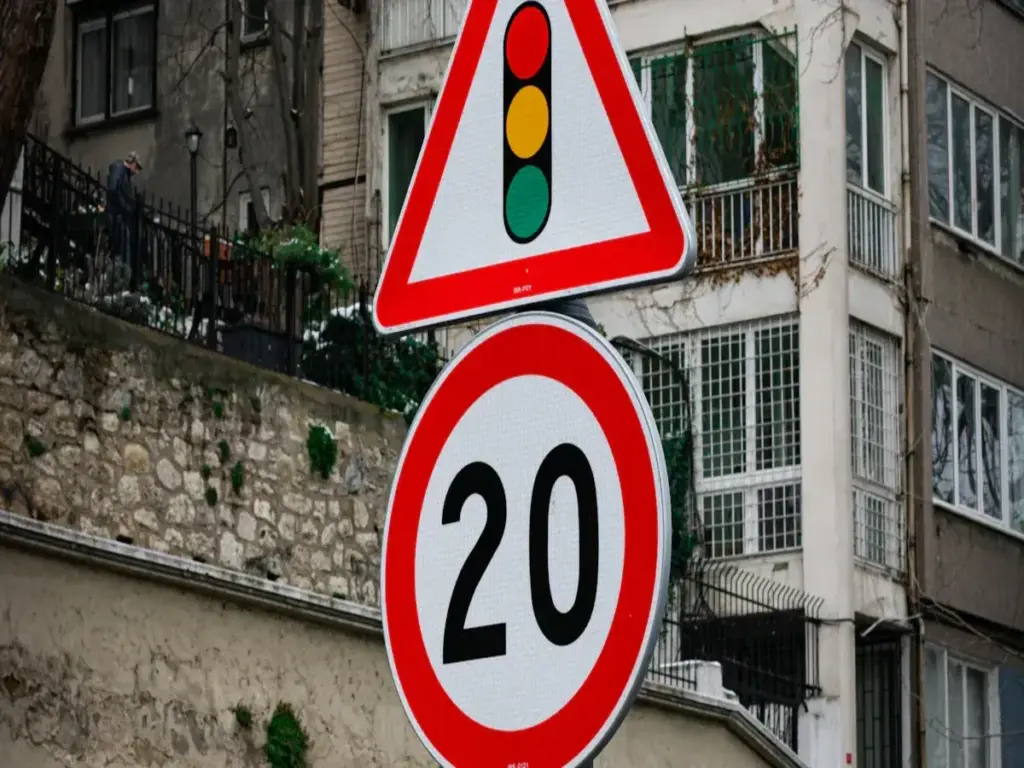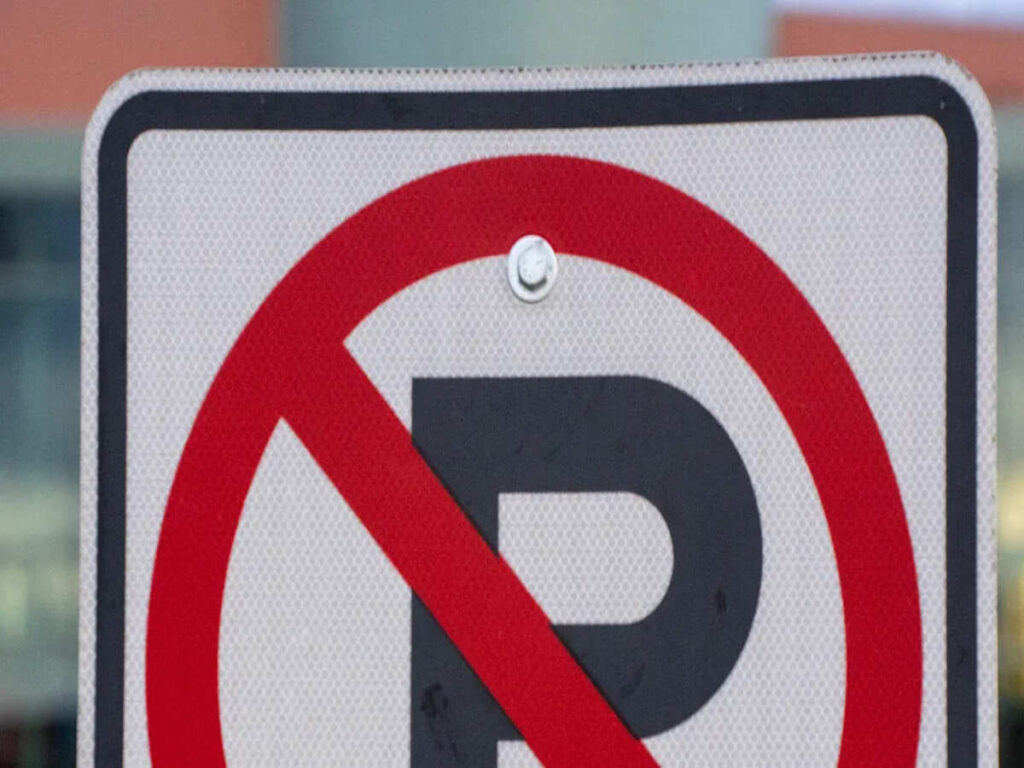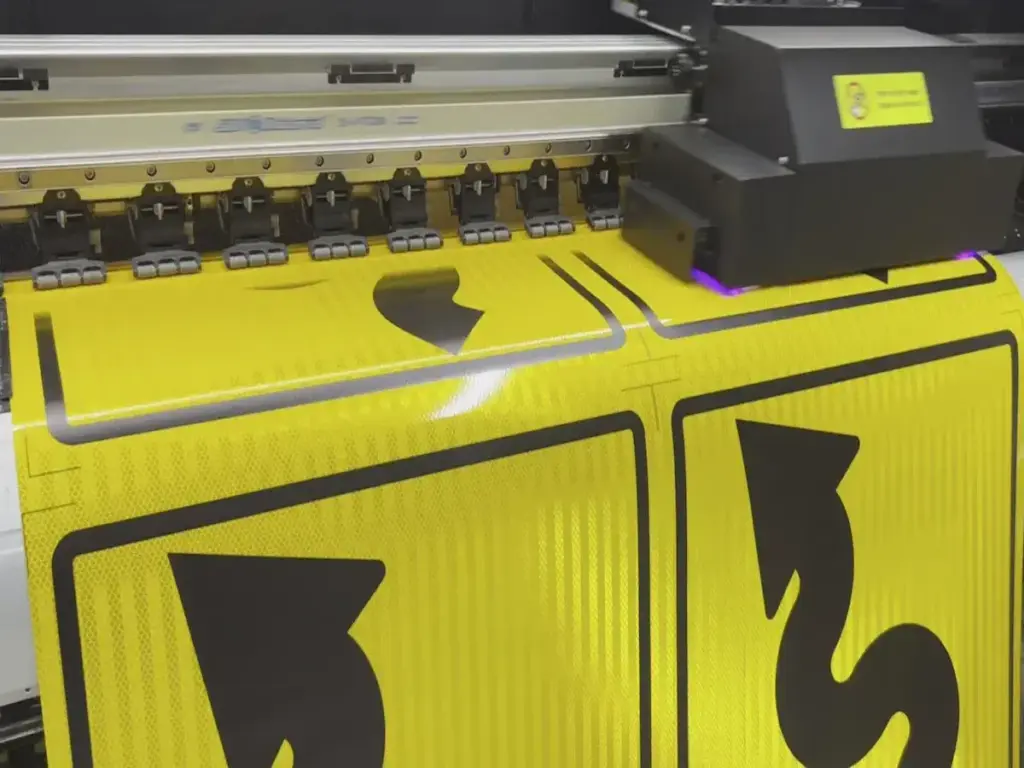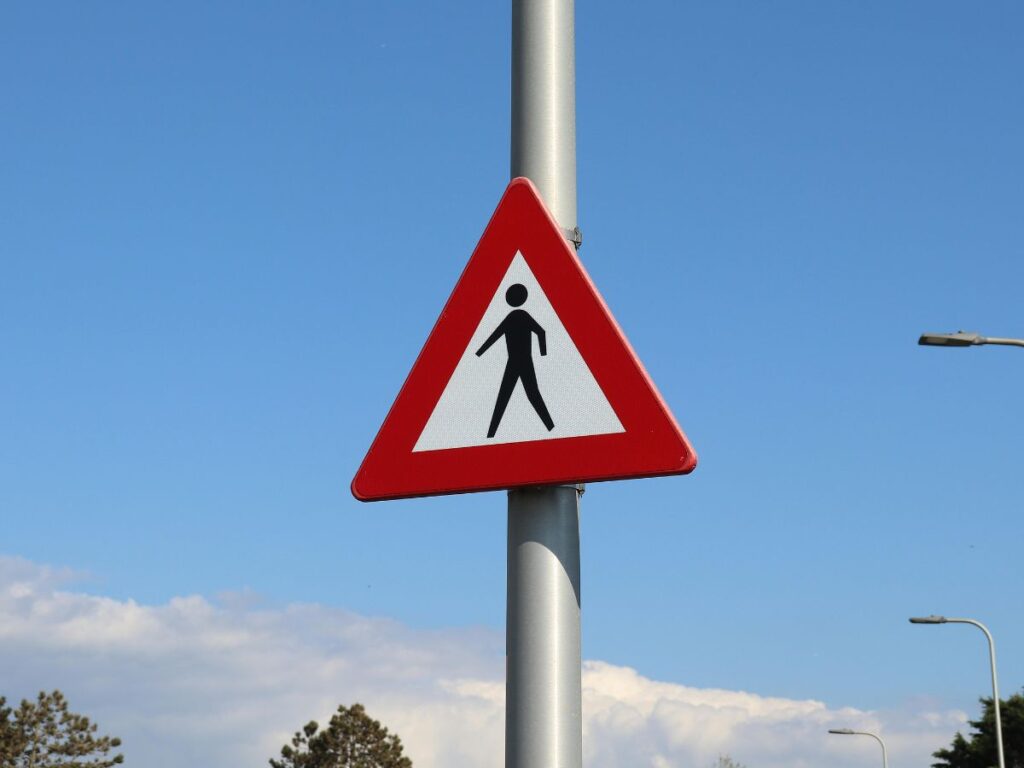
交通コーンは、交通安全と管理において重要な役割を果たします. それらの耐久性は、使用される材料と彼らが直面する環境条件に大きく依存します. 極端な温度は、パフォーマンスを大幅に変える可能性があります. プラスチックコーン, 軽量と紫外線抵抗で知られています, 多くの場合、強火で柔らかくしたり変形したりします. ゴム製のコーン, 優れた柔軟性と衝撃吸収により, 影響下でも安定性を維持します. しかし, 寒い気候は両方の材料を脆くする可能性があります, 彼らの寿命を減らす. ゴム製のコーン, 加重ベースで設計されています, プラスチックの代替品と比較して、転換やひび割れに対するより良い耐性を提供する, より厳しい気候に理想的にします.
極端な温度での物質的行動の背後にある科学
熱膨張と収縮
さまざまな温度にさらされると、プラスチックやゴムなどの材料が顕著な変化を受けます. 熱膨張 熱がこれらの材料の分子を引き起こすときに発生します, サイズを増やします. 逆に, 分子の動きが遅くなるにつれて、低温は収縮につながります. この一定の膨張と収縮は、時間の経過とともに交通円錐の構造的完全性を弱める可能性があります. 例えば, 広い温度範囲への繰り返しの曝露は、亀裂や反り原因を引き起こす可能性があります, 特にプラスチックの交通コーンで. ゴム, より柔軟ですが, また、これらの変化からストレスを経験します, ライフサイクルを短縮できます.
プラスチックとゴムの分子変化
極端な温度が変化します 分子構造 プラスチックとゴムの両方の. 高温で, プラスチックポリマー内の結合は弱くなります, 軟化と変形を引き起こします. ゴム, 一方で, 熱分解を受ける, 弾力性を低下させ、割れやすくします. 低温は逆の効果があります. プラスチックはそのように脆くなります 分子結合が硬化します, 骨折の可能性が高くなります. ラバーは、凍結状態での柔軟性を失います, 衝撃の吸収にあまり効果的ではありません. これらの分子の変化は、さまざまな気候でのトラフィックコーンの耐久性と性能に直接影響を与えます.
温度が弾力性と構造の安定性にどのように影響するか
弾性 トラフィックコーンの機能において重要な役割を果たす. プラスチックとゴムは、温度の変動に対して異なって反応します, 以下の表に示すように:
| 温度 (°C) | 引張応力変動 |
|---|---|
| 10 | リニア 増加 |
| 70 | 線形増加 |
低温で, プラスチックの交通コーンは弾力性を失います, 硬くなり、ひび割れやすくなります. ゴム製のコーン, より回復力がありますが, また、柔軟性が低下します. 高温はプラスチックを柔らかくします, 反りや融解につながります, 構造の安定性を損なう. 不安定性の一般的な原因には、ワーピングが含まれます, 変色, ベースでの変形. これらの問題は、コーンのライフサイクルを減らすだけでなく、交通安全を維持する際の視界と有効性にも影響します.
ヒント: 特定の温度範囲向けに設計された材料の選択は、トラフィックコーンのライフサイクルを拡大し、一貫したパフォーマンスを確保するのに役立ちます.
交通コーンに対する極端な熱の影響

プラスチックコーンの軟化と変形
プラスチックの交通コーンは、高温にさらされると柔らかくなる可能性が非常に高くなります. 過度の熱により、プラスチックとPVCのポリマーが弱くなります, 顕著な変形につながります. このプロセスは、多くの場合、ゆがみや部分的な融解をもたらします, 特に、直射日光に長時間さらされている領域で. 円錐の構造的完全性は減少します, 安全マーカーとしての効果が低下します.
- 高温が引き起こす可能性があります:
- プラスチックおよびPVC材料の軟化.
- コーンの構造の反りまたは融解.
- 安定性と有効性の低下.
変形 通常、ベースから始まります, コーンがその重量をサポートします. ゆがんだベースは、直立し続けるコーンの能力を損なう, 特に風の強い天気や交通量の多いゾーンで. この不安定性はライフサイクルを減らし、頻繁な交換の必要性を高めます.
ゴムコーンの熱分解
ゴムの交通コーン, プラスチックよりも回復力がありますが, また、極端な暑さの課題にも直面しています. 高温への長時間の曝露は、ゴムの老化プロセスを加速します. この熱分解は材料を弱めます, 弾力性を失い、割れやすくなります. 時間とともに, 衝撃を吸収するコーンの能力は減少します, 全体的な耐久性を低下させます.
ゴムコンポーネント, 加重ベースや反射バンドなど, 特に脆弱です. これらの部分は、しばしば変色や硬化を経験します, コーンの寿命をさらに短くします. これらの問題にもかかわらず, ゴムの交通コーンは、一般的に暑い気候の柔軟性があるため、プラスチックの代替品よりも優れたパフォーマンスを発揮します.
材料の完全性に対する熱の長期的な影響
高温への継続的な曝露は、交通コーン材料に永続的な影響を及ぼします. プラスチック製のコーンはしばしば色が消えます, 道路での視認性を低下させます. 反りと変形はより顕著になります, 特に基地で, 不安定につながります. ゴム製のコーン, より耐久性がありますが, また、弾力性の低下や時間の経過とともに割れにも及びます.
極端な熱にさらされると、交通コーンのライフサイクルが大幅に短くなります. サーマルサイクリング, 材料が繰り返し拡大して契約する場合, 分子結合を弱めます. このプロセスは摩耗と裂け目を加速します, コーンの寿命を延ばすために定期的なメンテナンスが不可欠になります.
注記: 耐熱性の材料を選択してコーンを日陰のある領域に保管することは、これらの効果を軽減し、それらの使いやすさを延長するのに役立ちます.
トラフィックコーンをOptSigns 高温とサーマルサイクリングによってもたらされる課題に耐えるように設計されています. 特別に処方された材料で構築されています, トラフィックコーンをOptSigns 反りに対する抵抗の改善を提供します, フェード, とひび割れ. この耐久性はそれを保証します OptSigns コーンは形と視界を維持します, 極端な条件でも, 建設現場や忙しい道路など、厳しい環境に長期的な信頼性と安全性を提供する.
交通コーンに対する極端な寒さの影響

プラスチックコーンの脆性とひび割れ
プラスチックの交通コーンは寒い気候で大きな課題に直面しています. 低温条件により、プラスチックのポリマーが硬化します, 柔軟性を低下させます. この剛性は、脆性の可能性を高めます, コーンをストレスの下で割れやすくする. 例えば, 車両や重い物体が凍結天候でプラスチックコーンに衝撃を与えるとき, 材料は、しばしば曲げる代わりに骨折します. この脆性は、円錐のライフサイクルを短くします, 寒い気候で頻繁に交換する必要があります.
損傷を最小限に抑えるため, メーカーはしばしば、寒い環境向けに設計されたプラスチックコーンを使用することをお勧めします. これらのプラスチックトラフィックコーンには、柔軟性を高める添加物が組み込まれています, 凍結状態でも. しかし, 亀裂の初期の兆候を特定し、さらなる劣化を防ぐためには、定期的な検査が不可欠です.
ゴムコーンの柔軟性が低下します
ゴム製のコーン, 弾力性で知られています, また、極端な寒さで柔軟性を低下させます. 凍結温度により、ゴムが硬化します, 圧縮後に元の形状に戻る能力を制限する. これ 剛性 ひび割れのリスクを高めます, 特にゴムの交通コーンが繰り返し圧縮または曲がっている領域では. 時間とともに, 柔軟性の喪失は、コーンの耐久性に影響を与え、安全ツールとしての有効性を低下させます.
これらの課題にもかかわらず, ゴム製のコーンは一般に寒い気候ではプラスチックの代替品よりも優れています. 彼らの固有の 衝撃吸収特性 彼らが壊れることなく小さな影響に耐えることを許します. 温度制御された環境での適切な保管は、柔軟性を維持し、ライフサイクルを拡大するのに役立ちます.
凍結状態での耐衝撃性と耐久性
凍結状態での交通コーンの耐衝撃性をテストすることで、耐久性に関する貴重な洞察が得られます. 標準テストでは、評価の少なくとも2時間前に、コーンを-18°Cの低温まで調整することが含まれます。. テスト中, 900gのスチールボールがコーンで振られ、損傷なしに衝撃に耐える能力を評価します. さらに, からのドロップテスト 1.5 メートルは、コーンが衝突時に破裂したり壊れたりしないことを保証します. 安定性テストは、水平方向の力を適用して、コーンのチップに対する抵抗を確認します.
| テストの側面 | 説明 |
|---|---|
| 低温 | コーンは-18°Cに条件付けられています (+/- 2°C) 最低でも 2 テストの数時間前. |
| 耐衝撃性 | 900gのスチールボールが1750mmの半径で振られます; コーンの一部を損傷する必要はありません. |
| ドロップテスト | コーンは落とされます 1.5 メーター; 衝撃で破裂したり壊れたりしないでください. |
| 安定性 | の水平方向の力 6-13 ニュートンが適用されます; コーンは覆されてはなりません. |
これらのテストは、凍結天候に耐えることができる材料を選択することの重要性を強調しています. 寒い気候のために設計された交通コーンは、多くの場合、耐衝撃性を改善し、ライフサイクルを延長するために高度な材料を組み込んでいます.
ヒント: 極端な寒さの間に屋内で交通コーンを保管すると、凍結温度への暴露を減らし、早期損傷を防ぐことができます.
プラスチックと比較. 極端な温度でのゴム製のコーン
熱と寒さのプラスチックコーンの性能
プラスチックの交通コーンは中程度の気候ではうまく機能しますが、極端な温度で大きな課題に直面しています. 強火で, プラスチックはソフトします, 反り、さらには部分的な融解につながります. この変形はコーンの構造的完全性を損ない、安全ツールとしてのその有効性を低下させます. 寒い気候は別の問題を提示します. プラスチックは脆くなります, ストレス下でひび割れする可能性を高める. これらの脆弱性は、プラスチックの交通コーンのライフサイクルを短くします, 特に厳しい気象条件がある地域で.
これらの問題を軽減する, メーカーは、多くの場合、UV耐性または熱耐性プラスチックを使用します. これらの材料は退色に抵抗し、日光の下でその構造を維持します. しかし, これらの機能強化があっても, プラスチックコーンは、極端な気候で頻繁に交換する必要があります, これにより、長期コストが増加します.
極端な温度におけるゴムコーンの利点
ゴムの交通コーンは、耐久性と柔軟性のために極端な温度で優れています. プラスチックとは異なり, ゴムは、高熱の形と安定性を維持します, 転倒するリスクを減らす. その加重ベースは安定性を高めます, 風や衝撃によって避難する可能性が低くなる. 寒い気候で, ゴムは、衝撃吸収特性を保持します, ひび割れずに小さな影響に耐えることができます.
- 極端な熱におけるゴムコーンの重要な利点:
- ゴム製のコーンは、形と安定性を維持します, 過度の熱でも.
- 加重基地は、風の強い状態で直立したままであることを保証します.
- ゴムの回復力は、交通安全に必要な視覚的な手がかりを保持します.
ゴムの交通コーン, リサイクル材料で作られています, 交通管理のための耐久性のある環境に優しいソリューションを提供します. それらは、衝撃吸収でプラスチックの代替品を上回っています, 長寿, 環境への影響, それらを極端な気候に理想的にします.
コストとメンテナンスの考慮事項
ゴム製のコーンは、プラスチックコーンと比較してより高い初期投資を必要とします. しかし, それらの耐久性は長期的な節約につながります. ゴムはひび割れと摩耗に抵抗します, 頻繁な交換の必要性を減らす. この寿命はメンテナンスコストを最小限に抑えます, ゴム製のコーンを極端な気候のための費用対効果の高い選択肢にする. プラスチックコーン, 安価ですが, 過酷な条件でより速く劣化します. 頻繁な交換とメンテナンスは、時間の経過とともに全体的なコストを増加させます.
ゴムの交通コーンは、リサイクル材料を利用することにより、環境保全に貢献します, 古いタイヤなど. この実践は無駄を減らし、貴重なリソースの再利用を促進します, 環境に優しいイニシアチブをサポートします.
ゴム製のコーンに投資することで、時間の経過とともに信頼性と機能性が保証されます. 厳しい気象条件に耐える能力は、交通管理のための実用的で持続可能な選択となります.
トラフィックコーンの耐久性を高めるための実用的なヒント
気候に適した材料を選択します
適切な材料を選択すると、特定の気候で交通コーンがうまく機能することが保証されます. 激しい日光にさらされる地域の場合, UV処理HDPE 優れた気象抵抗を提供します. この材料は退色を防ぎ、長時間の日光の下で構造的完全性を維持します. ゴム製のコーンは、極端な温度変動のある領域に最適です. それらは冷たい寒さと焦げた熱の両方で機能的なままです, 耐久性と可視性を確保します.
その他の材料, UV耐性プラスチックや熱耐性プラスチックなど, また、信頼できるオプションを提供します. UV耐性プラスチックは、日光からの分解に抵抗します, 耐熱プラスチックは、高温下で形状を維持します. 頑丈な反射シートを追加すると、低光条件での視界が向上します, これらのコーンを多様な環境に適しています.
コーンの寿命を長くするためのメンテナンスプラクティス
定期的なメンテナンス トラフィックコーンの寿命を大幅に拡張します. 頻繁な検査は、変形などの問題を特定するのに役立ちます, ひび割れ, または早期に変色. 耐熱性のコーティングは色を保存し、退色を防ぎます, コーンが表示されたままであることを保証します. 反射シート また、反射特性を保持していることを確認するためにチェックする必要があります.
極度の熱で, プラスチックコーンは、ゆがんだり溶けたりする場合があります, 特に基地で. これらの問題に対処することは、速やかにさらなる損害を防ぎます. ゴム製のコーン, より耐久性がありますが, 時間の経過とともに弾力性を失う可能性があります. 定期的なクリーニングと適切なケア老化の影響を減らし、アンチエイジングパフォーマンスを改善する, ゴムの交通コーンとプラスチックの交通コーンがライフサイクルを通して有効なままであることを保証する.
温度関連の損傷を防ぐための適切な保管
適切なストレージは、交通コーンの寿命と持続可能性を維持する上で重要な役割を果たします. ゴムの交通コーンとプラスチックの交通コーンを屋内または日陰のある領域に保管すると、直射日光と極端な暑さから保護します. この慣行は、反りのリスクを最小限に抑えます, 溶融, またはフェード. 寒い気候で, 温度制御された環境にコーンを維持すると、脆性と亀裂が防止されます.
ゴムの交通コーンとプラスチックの交通コーンを積み重ねると、ベースへの不必要な圧力を慎重に回避する, 変形につながる可能性があります. 長期保管用, 保護カバーを使用すると、シールドコーンが環境要因から, 天気の抵抗を維持し、ライフサイクルを延長します.
ヒント: 高品質の材料に投資し、適切なメンテナンスプラクティスに従うことで、交通コーンが厳しい状態に耐え、耐久性を維持することが保証されます.
極端な温度は、トラフィックコーンの耐久性と性能に大きく影響します. 高熱により、プラスチックコーンがゆがんでいる可能性があります, 溶ける, またはフェード, 寒い状態はそれらを脆くし、ひび割れを起こしやすくしますが. ゴム製のコーン, 優れた柔軟性を備えています, 極端な気候ではより良いパフォーマンスがありますが、凍結温度の弾力性の低下などの課題に直面しています. 適切な材料の選択, UV処理HDPEやゴムなど, 耐久性を確保し、コーンのライフサイクルを拡張します. 定期的なメンテナンスと適切な保管は、彼らの寿命をさらに強化します. 地域の気候条件を考慮すると、ユーザーは時間の経過とともに効果的で信頼性の高いトラフィックコーンを選択するのに役立ちます.



















